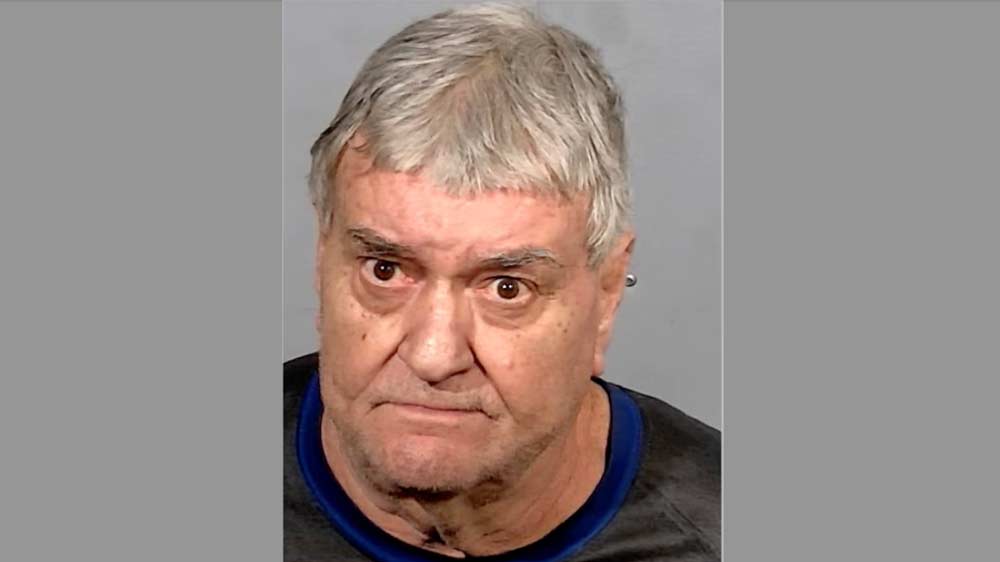February 17, 2013
UCLA Hate Crime Highlights the Rise in Anti-Gay Violence in L.A.
Holly Grigg-Spall READ TIME: 6 MIN.
A recent spate of anti-gay attacks in Los Angeles, including one on the campus of UCLA, has the local police department and the campus LGBT group looking for ways to educate and prevent these attacks, including an on-campus workshop and rally.
"Although we feel our campus is generally a very safe environment, we are working closely with the UCPD to produce a workshop for students in response to this incident," said UCLA LGBT Resource Center Director Raja Bhattar.
A student walking on Gayly Avenue on the UCLA campus at 1:30 a.m. on Jan. 18 had a knife held to his throat by two men who used anti-gay slurs, reportedly saying, "Die, faggot, die," during the attack. The student managed to escape with minor injuries and the suspects left the scene in a vehicle.
The incident is being investigated as a hate crime and the police have released a sketch of one of the men and a description of the other involved. One suspect is described as a white male who is 5'9" and weighs between 160-170 pounds. He is believed to be between the ages of 26-27, has a shaved head and was wearing a grey hoodie and blue jeans.
The other suspect was described as a male Latino, between 26-27 years old, weighing about 300 pounds with has long "slicked-back" hair. The two men were driving a dark-colored, four-door sedan.
This attack comes in the wake of two other media reported anti-gay hate crimes in the Los Angeles area. Two Latino men shouting homophobic slurs stabbed two men in Echo Park in May 2012.
And in June 2012 in Hancock Park, a gay homeless man was beaten by a white male after telling the attacker, who also used anti-gay language, that he was gay and had AIDS. Bhattar hoped that the LGBT Resource Center's workshop would give people the skills to recognize, report and prevent these incidences.
"We will be discussing the definition of hate crime and bias incidences in order to raise awareness of inappropriate and discriminatory language and terminology. We will also provide information on avenues for reporting incidents and issues and consider the ways in which we can work to prevent hate crimes in the future," said Bhattar.
More than 6,000 hate crimes were reported to law enforcement agencies nationally in 2011, but this number is 6 percent less than that in 2011. Yet anti-gay crime has risen by 2.6 percent, with 1,508 incidents reported. Twenty-one percent of hate crimes are motivated by a sexual orientation bias, with men making up the majority of victims of those crimes. These numbers, of course, do not take into account the incidents that go unreported due to the victim's fear of reporting to the police.
The 2011 Los Angeles County Commission on Human Relations report on hate crime showed that crimes motivated by homophobia rose 13 percent in the area, making anti-gay violence the source of 1 in 4 hate crimes. Gay men were targeted in 84 percent of the cases. Forty-four percent of victims were Latino, 39 percent white and 12 percent African American. The majority of crimes take place in public spaces. A hate crime is not only defined as physical assault but also vandalism or intimidation.
Six percent of all reported hate crimes occurred at schools. One incident involved a college student becoming the target of harassment and death threats and another two incidents saw students attacked off-campus on their way to school.
The Commission has several initiatives to combat hate crimes, including the countrywide Network Against Hate Crime and the Hate Violence Prevention Practitioners Network.
The UCLA LGBT Resource Center organized a rally on Feb. 4 in response to the incident on campus. About 40 students and faculty discussed how to continue with the standard of safety the school has established. In an effort to show that people shouldn't be judged on how they dressed, some wore clothes normally associated with a gender different from the one with which they identify.
The members of the resource center provided handouts that outlined counseling services available at the center and details of the 24-hour helpline, as well as information on how to be an ally to the LGBT community. The speakers thanked the campus police and LAPD for their efforts in finding the perpetrators and highlighted available support and services to those concerned about hate crimes and discrimination.
The LA Gay and Lesbian Center's Anti-Violence Project provides support for victims of hate crimes. Representatives aid victims in working with law enforcement from giving guidance in filing a police report to accompanying the person to court.
"LGBT folks have historically not had a good relationship with law enforcement," explains Jake Finney, the project manager. "Many victims report the crime to the Anti-Violence Project first. Navigating the criminal justice system in the aftermath of an attack can be traumatizing. It is possible for a victim to be re-victimized during the process of working with the police and we hope to prevent that from happening through our work."
The Anti-Violence Project has a toll-free number through which victims and witnesses to crimes can gain help and support. The Project also provides access to shelter if the crime is committed in the victim's home or neighborhood and so requires that they leave the environment.
Finney believes that one of the most important steps in preventing hate crime is educating the LGBT community on their rights. Victim and survivor rights are constitutional in the state of California under Marsy's Law. The law asserts victim's rights including protection from the defendant, notification of all court proceedings and restitution.
Many people are unaware of the parameters of the definition of a hate crime. An attack against someone not LGBT but perceived to be so, as well as an attack against someone associating with those who are LGBT or displaying support for LGBT rights also constitutes a hate crime. An attack on someone with HIV is considered an attack based on disability. LGBT organizations are also protected under this law.


